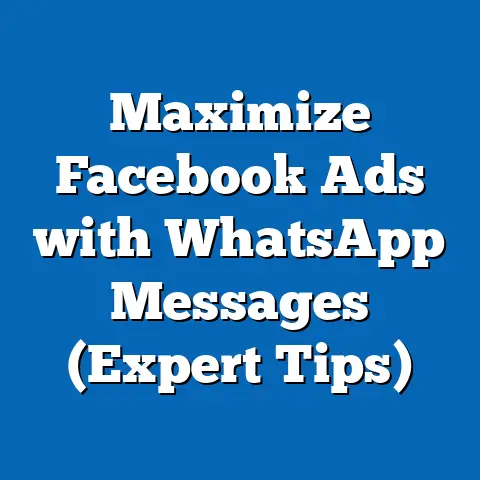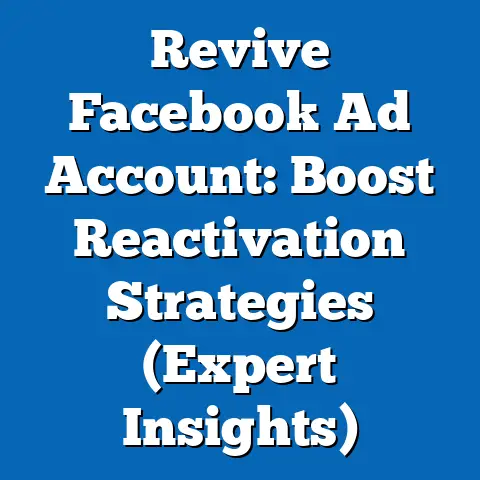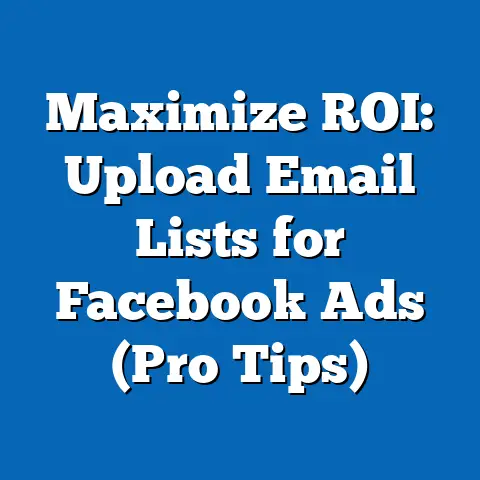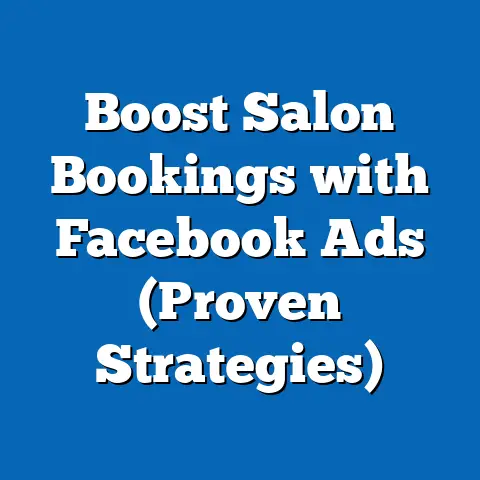Facebook vs. Instagram Ads: Which Delivers Better ROI? (Expert Insights)
Imagine a scenario where every dollar you invest in advertising not only comes back to you but also brings along a few extra friends. That’s the power of a well-optimized ad campaign on the right platform. For marketers, the quest for the highest return on investment (ROI) is never-ending. In today’s digital landscape, Facebook and Instagram stand out as two of the most powerful advertising platforms. But which one truly delivers better ROI? The answer isn’t as straightforward as you might think. Both platforms offer unique strengths, distinct audience demographics, and varying levels of engagement, all of which can significantly impact ad performance. In this article, I’ll dive deep into a detailed comparison of Facebook and Instagram ads to help you make an informed decision on where to allocate your advertising budget for maximum ROI.
Overview of Facebook and Instagram Ads
Let’s start with a little background. Facebook, launched in 2004, has grown into a behemoth with nearly 3 billion monthly active users. As an advertising platform, it offers unparalleled reach and a vast array of targeting options. Instagram, acquired by Facebook in 2012, boasts over 1 billion monthly active users and is known for its visually-driven content and younger demographic. According to Statista, digital advertising spending on social media platforms is projected to reach nearly $240 billion in 2024, with Facebook and Instagram capturing a significant share of this market.
Facebook Ads: The All-Encompassing Giant
Facebook Ads is a comprehensive advertising system that allows businesses to create and manage campaigns with incredible precision. Some key features include:
- Ad Formats: Facebook supports a wide range of ad formats, including image ads, video ads, carousel ads (multiple images or videos in a single ad), collection ads (designed for e-commerce), and lead generation ads (collecting user information directly within the ad).
- Targeting Options: Facebook’s targeting capabilities are arguably its biggest strength. Advertisers can target users based on demographics (age, gender, location), interests, behaviors, and even custom audiences (uploading your own customer list).
- Analytics Tools: Facebook Ads Manager provides robust analytics tools that allow you to track ad performance, measure key metrics, and optimize campaigns in real-time.
In my experience, Facebook Ads is a powerhouse for businesses looking to reach a broad audience and leverage detailed targeting options. I once ran a campaign for a local bookstore targeting readers within a 5-mile radius who had shown interest in specific genres. The results were phenomenal, with a significant increase in foot traffic and online sales.
Instagram Ads: Visual Storytelling at its Finest
Instagram Ads, on the other hand, is all about visual impact and engagement. Here’s what makes it unique:
- Visually-Driven Nature: Instagram is primarily a visual platform, so ads need to be eye-catching and aesthetically pleasing. High-quality images and videos are crucial for success.
- Stories Feature: Instagram Stories ads are full-screen, immersive experiences that can capture user attention in a unique way. They’re perfect for showcasing behind-the-scenes content, limited-time offers, and interactive elements like polls and quizzes.
- Integration with Facebook Ads Manager: The beauty of Instagram Ads is that it’s seamlessly integrated with Facebook Ads Manager. This means you can manage your campaigns for both platforms from a single interface, making it easier to maintain consistency and track overall performance.
I remember working with a fashion brand that wanted to boost brand awareness among younger audiences. We focused heavily on Instagram Stories ads, creating visually stunning content that resonated with their target demographic. The result was a significant increase in brand mentions, follower growth, and website traffic.
Complementary Platforms
One of the smartest things I’ve learned is that Facebook and Instagram ads don’t have to be mutually exclusive. In fact, they often complement each other. You can use Facebook to reach a broader audience and then retarget those users on Instagram with more visually engaging content. This cross-promotion strategy can significantly boost your overall ROI.
Takeaway: Facebook offers broad reach and detailed targeting, while Instagram excels in visual engagement. The best approach often involves leveraging both platforms in a complementary way.
Analyzing ROI Metrics
ROI, or Return on Investment, is the holy grail of marketing. It’s a simple yet powerful metric that tells you how much profit you’re generating for every dollar you spend on advertising. In the context of digital advertising, ROI is often calculated as:
ROI = (Revenue – Cost) / Cost * 100
For example, if you spend $1,000 on Facebook ads and generate $3,000 in revenue, your ROI would be:
ROI = ($3,000 – $1,000) / $1,000 * 100 = 200%
Key Performance Indicators (KPIs) for Measuring ROI
To effectively measure ROI, you need to track several key performance indicators (KPIs):
- Cost Per Click (CPC): The amount you pay each time someone clicks on your ad. Lower CPC generally means higher ROI.
- Cost Per Acquisition (CPA): The cost of acquiring a new customer through your advertising efforts. Lower CPA is always desirable.
- Conversion Rates: The percentage of users who take a desired action (e.g., making a purchase, filling out a form) after clicking on your ad. Higher conversion rates lead to better ROI.
- Customer Lifetime Value (CLV): The total revenue you expect to generate from a single customer over the course of their relationship with your business. Understanding CLV helps you determine how much you can afford to spend on acquiring a new customer.
Comparing Average ROI: Data and Case Studies
So, which platform offers better ROI? The answer, as always, depends on your specific circumstances. However, some general trends can provide valuable insights.
According to a study by HubSpot, the average ROI for Facebook ads is around 152%, while Instagram ads tend to have a slightly lower average ROI of around 121%. However, these numbers can vary significantly depending on factors like industry, target audience, and ad creative.
For example, e-commerce businesses often see higher ROI on Instagram due to its visually-driven nature and the ability to showcase products in an appealing way. On the other hand, B2B companies might find Facebook more effective for reaching a professional audience and generating leads.
I once worked with a SaaS company that was struggling to generate leads through Instagram. We shifted our focus to Facebook, creating targeted ads that highlighted the benefits of their software for specific industries. The result was a significant increase in lead generation and a much higher ROI.
Takeaway: ROI is a critical metric for measuring advertising success. Track KPIs like CPC, CPA, conversion rates, and CLV to optimize your campaigns and maximize your return.
Audience Targeting and Engagement
One of the most significant factors influencing ROI is audience targeting. Both Facebook and Instagram offer powerful targeting capabilities, but they differ in their approach and effectiveness.
Facebook’s Extensive User Data
Facebook’s strength lies in its vast amount of user data. With billions of users sharing personal information, interests, and behaviors, Facebook allows advertisers to target audiences with incredible precision. You can target users based on:
- Demographics: Age, gender, location, education, income, and more.
- Interests: Hobbies, passions, and topics they follow.
- Behaviors: Purchase history, online activities, and device usage.
- Custom Audiences: Upload your own customer list or create lookalike audiences based on your existing customers.
This level of granularity allows you to create highly targeted campaigns that reach the right people with the right message.
Instagram’s Visual Engagement
Instagram, on the other hand, shines when it comes to visual engagement. While it also offers targeting options similar to Facebook, its strength lies in its ability to capture user attention through visually appealing content.
Instagram users are generally more receptive to visual ads, especially those that are authentic and engaging. According to a study by Kleiner Perkins, Instagram users spend an average of 28 minutes per day on the platform, making it a prime opportunity for advertisers to reach a captive audience.
User Behavior: Time Spent, Interaction Rates, and Content Preferences
Understanding user behavior on each platform is crucial for optimizing your campaigns. Here’s a quick comparison:
- Facebook: Users tend to spend more time reading articles, watching videos, and engaging in discussions. They’re also more likely to click on ads that offer valuable information or solve a specific problem.
- Instagram: Users are primarily focused on visual content. They’re more likely to engage with ads that are visually stunning, authentic, and aligned with their personal style.
I once ran a campaign for a travel agency, promoting vacation packages to specific destinations. On Facebook, we focused on informative ads that highlighted the benefits of each destination. On Instagram, we used visually stunning images and videos to capture user attention and inspire wanderlust. The Instagram ads generated significantly higher engagement rates, while the Facebook ads resulted in more direct bookings.
Takeaway: Facebook offers detailed targeting options, while Instagram excels in visual engagement. Tailor your ad creative and targeting strategy to match the unique characteristics of each platform.
Case Studies and Success Stories
Let’s take a look at some real-world examples of businesses that have successfully utilized Facebook and Instagram ads to achieve their marketing goals and boost ROI.
Case Study 1: E-commerce Fashion Brand
Business: An online fashion retailer targeting young women aged 18-35.
Strategy: The brand used Facebook ads to reach a broad audience and then retargeted those users on Instagram with visually stunning product images and videos. They also leveraged Instagram Stories ads to showcase behind-the-scenes content and limited-time offers.
Results: The campaign resulted in a 30% increase in website traffic, a 20% increase in online sales, and a 15% increase in brand awareness.
Key Takeaway: Combining Facebook’s broad reach with Instagram’s visual engagement can be a powerful strategy for e-commerce businesses.
Case Study 2: B2B Software Company
Business: A SaaS company offering project management software to small and medium-sized businesses.
Strategy: The company focused on Facebook ads, targeting business owners and managers based on their industry, job title, and interests. They created informative ads that highlighted the benefits of their software and offered a free trial.
Results: The campaign generated a 40% increase in lead generation, a 25% increase in free trial sign-ups, and a 10% increase in paid subscriptions.
Key Takeaway: Facebook can be highly effective for B2B companies looking to generate leads and reach a professional audience.
Case Study 3: Local Restaurant
Business: A local restaurant looking to attract more customers during off-peak hours.
Strategy: The restaurant used Facebook and Instagram ads to promote special offers and discounts during slow periods. On Facebook, they targeted local residents based on their interests and dining preferences. On Instagram, they used visually appealing food photos and videos to entice users to visit.
Results: The campaign resulted in a 20% increase in foot traffic during off-peak hours and a 15% increase in overall revenue.
Key Takeaway: Both Facebook and Instagram can be effective for local businesses looking to attract more customers.
I once helped a local coffee shop run a similar campaign, targeting users within a 2-mile radius with ads promoting their daily specials. The Instagram ads, featuring mouthwatering photos of their pastries and coffee drinks, were particularly effective in driving foot traffic.
Takeaway: Case studies demonstrate the versatility of both platforms. The key is to tailor your strategy to your specific business goals and target audience.
Conclusion
In conclusion, the decision between Facebook and Instagram ads ultimately depends on your specific goals, target audience, and the type of content you’re promoting. Facebook offers broad reach and detailed targeting options, making it ideal for reaching a wide audience and generating leads. Instagram, on the other hand, excels in visual engagement, making it perfect for showcasing products, building brand awareness, and connecting with younger audiences.
By understanding the unique benefits of each platform and tailoring your strategy accordingly, you can maximize your ROI and achieve your advertising goals. Remember, the most effective approach often involves leveraging both platforms in a complementary way, using Facebook to reach a broader audience and then retargeting those users on Instagram with more visually engaging content.
Call to Action
I encourage you to analyze your own advertising strategies and consider testing both platforms to determine which yields better results for your specific needs. Stay updated on trends and changes within these platforms to continually optimize your advertising efforts. The world of digital advertising is constantly evolving, and those who adapt and innovate will be the ones who ultimately succeed. So, dive in, experiment, and discover the power of Facebook and Instagram ads for your business.





